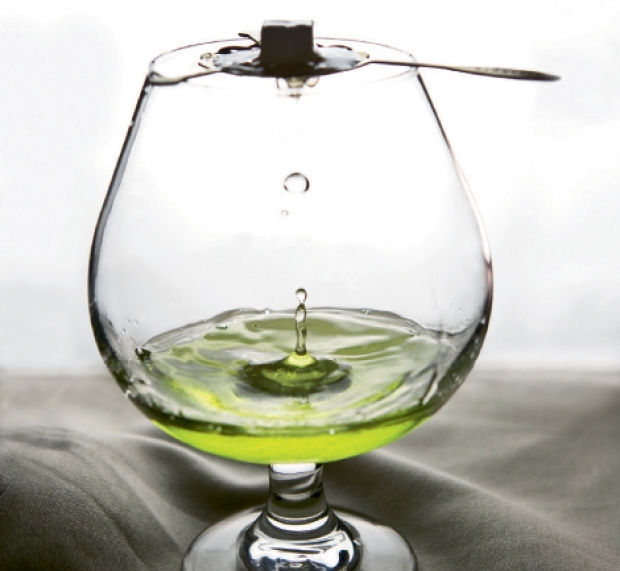Celebrate St. Patrick’s Day with a centuries-old nightcap—that’s green to boot

Once the toast of late-nineteenth-century Bohemian culture in Europe, notorious absinthe (a.k.a. la Fée Verte, or the Green Fairy, and Swiss la Bleue) tickled the tongues of visual artists and literati alike, including Manet, Degas, Van Gogh, and Picasso, Oscar Wilde, Baudelaire, and Edgar Allen Poe.
In the 1700s, Dr. Pierre Ordinaire concocted the spirit out of the bitter oil of the plant Artemisia absinthium, or wormwood. Absinthe treated everything from colds to malaria—with claims of almost miraculous healing powers—and artists and tradesmen alike extolled its “mysterious effect” that heightened senses and opened creative portals. By 1900, in the cafés of Paris, cocktail hour was commonly known as L’Heure Verte, or the Green Hour.
But the era of the Green Hour came to an end as a temperance movement swept across Europe and the United States, blaming the drink for all drunkenness, insanity, and even the headline-capturing murder of a farming family. After a long exile and evidence that refuted the nasty accusations, absinthe is quietly assimilating back into polite bar society.
Its licorice flavor and the herbal “holy trinity” of wormwood, fennel, and anise stimulate the tongue and palate, making absinthe more suitable as an aperitif or after-dinner drink.
The presentation is an event in itself. Traditionally, one part absinthe is dispensed over a sugar cube that is placed on a slotted spoon, which sits atop the glass. Cold water is decanted to dissolve the cube and dilute the spirit. The sugar sweetens the bitter note of the herb and the spirit clouds a greenish color when its oil mingles with the water.
Locally, the House of Blues and Hard Rock Café shake up cocktails that include absinthe, but for the purist, The Brentwood Restaurant in Little River abides by the centuries-old methodology. And Divine Prime and City Bar in Myrtle Beach offer a caramelized version of the drink by setting the sugar cube on fire—a perfect antidote to winter’s enduring chill.
The Proper Pour
Step One: Pour a quantity of absinthe into a
glass equal to one-fifth of its capacity.
Step two: Place the slotted spoon across the rim of the glass with the notch of the spoon resting on the rim. Place a sugar cube on the spoon. (You can use a fork in a pinch).
Step three: Begin by pouring a small amount of water onto the sugar cube to saturate it. Let it sit for a minute or two to let the sugar cube begin dissolving on its own. Slowly pour a slender stream of water (usually a ratio of 4 parts water to one part absinthe) onto the cube. As the water and absinthe blend, the cloudy effect begins. Continue this process until the sugar is completely dissolved.
Step four: Stir any remaining sugar in the bottom of the glass.
Step five: Slowly sip your absinthe and savor the experience.
The Proper Way to Drink Absinthe in Society by Kübler Absinthe.